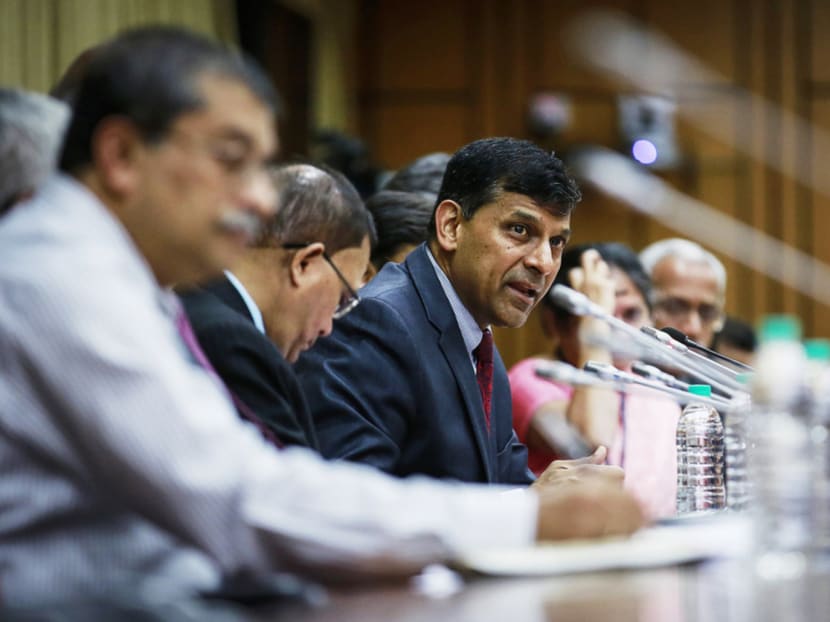India’s central bank cuts rate in post-budget surprise
MUMBAI — India’s central bank unexpectedly lowered its policy rate for the second time this year yesterday, backing a government that is pushing to revive economic growth.

RBI Governor Raghuram Rajan pointed to low capacity utilisation and weak indicators of production and credit off-take as reasons for the move. Photo: Reuters
MUMBAI — India’s central bank unexpectedly lowered its policy rate for the second time this year yesterday, backing a government that is pushing to revive economic growth.
Markets had broadly expected the Reserve Bank of India to reduce rates again after a cut in January, but few had expected a move just days after the government agreed for the first time to give the central bank a legal mandate to target inflation.
Reserve Bank of India (RBI) Governor Raghuram Rajan, citing weakness in Asia’s third-largest economy, lowered the benchmark repurchase rate by a quarter of a percentage point to 7.5 per cent, the second such move this year. Economists at banks had expected the RBI to hold off until the next meeting, on April 7.
“Given low capacity utilisation and still-weak indicators of production and credit off-take, it is appropriate for the Reserve Bank to be pre-emptive in its policy action,” Mr Rajan said.
The RBI embarked on an easing cycle on Jan 15 with a quarter-percentage-point reduction that had also caught the market off guard by taking place outside of a scheduled review.
The benefits still have to pass through to borrowers, however, as commercial banks have been hesitant about lowering their lending rates.
India’s move is the latest salvo in an onslaught of global easing outside the US, with more than a dozen central banks adding stimulus so far this year. The central bank alluded to the need to keep up with counterparts in the easing cycle, saying the rupee remained strong relative to peers.
The decision came four days after Prime Minister Narendra Modi’s government increased spending on infrastructure in its first full-year budget and agreed to a formal inflation target.
“There’s huge scope for further rate cuts, given the price of oil and low levels of consumer and wholesale price inflation,” said Mr S Naren, chief investment officer at ICICI Prudential Asset Management. “The real rates of interest in India are still very high.”
Indian inflation has moderated sharply as global oil prices have slumped since last year. In January, consumer prices rose an annual 5.11 per cent, having fallen from double digit levels posted as recently as November 2013.
That puts inflation well within a target of 4 per cent, with a band of plus or minus two percentage points, agreed by the RBI and the government for the financial year beginning in April 2016.
Mr Rajan, at a conference call with analysts yesterday, said the RBI would target an inflation rate of 4 per cent by the end of January 2018.
While saying “an excessively strong rupee is undesirable”, Mr Rajan also noted that it helps disinflation. The central bank does not target a level for the exchange rate or foreign exchange reserves and intervenes on occasion only to reduce volatility, he said. Agencies





